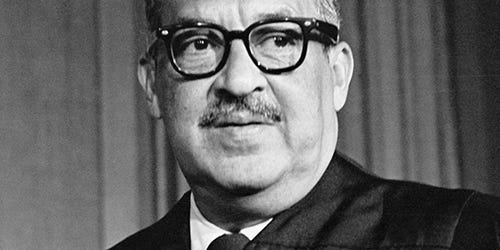Let’s embark on a journey to uncover the fascinating story of Hernán Cortés, a figure who forever etched his name in history.
Born around 1485 in Spain, Cortés was a conquistador driven by ambition and a thirst for adventure. His arrival in The New World at the tender age of 19 marked the beginning of a remarkable odyssey that would lead him to conquer one of the most powerful empires of the time: the Aztec Empire. Cortés’s story is a complex tapestry woven with threads of triumph, brutality, and enduring legacy.
While his biography of Hernán Cortés paints a picture of a ruthless conqueror who decimated an entire civilization, it also reveals a shrewd strategist, a charismatic leader, and a man who forever changed the course of history. We’ll delve into his rise to power, his audacious conquest of Mexico, and the lasting impact his actions had on both the Americas and Spain itself.
Early Life and Rise in Cuba
Before he set his sights on The Aztec Empire, Hernán Cortés honed his skills and forged connections in Cuba. Arriving at the island around 1504, he quickly immersed himself in the Colonial World, serving as a soldier and engaging in legal disputes to secure land and wealth. His ambition was evident from the start, driving him to climb the social ladder and build alliances with influential figures.
Cortés’s time in Cuba proved crucial for his future conquests. He learned about the potential riches of the mainland, absorbing knowledge about Indigenous cultures and Military Tactics. The island also served as a Training Ground, where he gained valuable experience in warfare and leadership. Through strategic marriages and shrewd business dealings, Cortés amassed a small fortune and cultivated a network of loyal supporters who would later accompany him on his epic journey to Mexico.
 Farrah Fawcett on Charlies Angels: Reasons For Departure
Farrah Fawcett on Charlies Angels: Reasons For DepartureHe wasn’T Just Accumulating Resources; he was building a foundation for His Future Ambitions. This early period laid the groundwork for the Hernan Cortes Biography that would soon capture the world’s attention.
The Conquest of the Aztec Empire
In 1518, Hernán Cortés set sail from Cuba with a small but determined force, embarking on an audacious expedition to conquer The Aztec Empire. His journey was fraught with danger and uncertainty, marked by treacherous seas, hostile Indigenous tribes, and the daunting task of facing one of the most powerful civilizations in the world. Cortés, however, possessed a unique blend of cunning strategy, Unwavering Determination, and ruthless ambition that would ultimately Lead Him To Victory.
His approach wasn’t solely based on brute force. Cortés masterfully exploited existing divisions within The Aztec Empire, forging alliances with rival Indigenous groups who resented Aztec rule. He played one faction against another, sowing seeds of discord and weakening the empire from within. Simultaneously, He Employed Advanced Military Tactics, utilizing gunpowder weapons and cavalry to devastating effect against the Aztecs’ Formidable Armies.
The siege of Tenochtitlán, the heart of The Aztec Empire, was a brutal and protracted battle that lasted for months. The city, an island metropolis teeming with life, became a crucible of war, ravaged by disease, famine, and relentless attacks. By 1521, after a grueling campaign marked by treachery, bloodshed, and unimaginable suffering, Cortés had triumphed over the Aztecs, effectively ending their reign and paving the way for Spanish colonization of Mexico. This conquest, documented in his biography of Hernan cortes, would forever alter the course of history.
Montezuma Ii and the Fall of Tenochtitlán
Montezuma Ii, the emperor of the Aztecs at the time of Cortés’S Arrival, initially welcomed the Spanish as gods due to their advanced weaponry and Strange Attire. He believed Cortés to be a manifestation of Quetzalcoatl, the feathered serpent god prophesied to return from the east. This misinterpretation proved fatal for The Aztec Empire, allowing Cortés to gain a foothold within Tenochtitlán, the sprawling capital city.
However, as Cortés’S True Intentions Became Clear – conquest and plunder – Montezuma found himself caught in a web of deceit and violence. The Spanish, wielding superior technology and exploiting existing Internal Conflicts, gradually tightened their grip on the city. Montezuma attempted to appease Cortés, offering him vast treasures and concessions, but his efforts proved futile. Ultimately, he was taken hostage by Cortés, further destabilizing The Aztec Empire.
The fall of Tenochtitlán in 1521 was a brutal culmination of this Power Struggle. The Spanish, aided by their Indigenous allies, laid siege to the city for months, engaging in relentless warfare that ravaged its streets and neighborhoods. This tragic chapter in Hernan cortes biography witnessed the destruction of an Entire Civilization, leaving behind a legacy of pain, displacement, and cultural upheaval.
Governance and Challenges in New Spain
Cortés’s conquest brought him immense power and influence. In 1522, he was appointed governor of New Spain, a vast territory encompassing much of modern-day Mexico. His role involved establishing colonial administration, overseeing the extraction of resources, and suppressing any resistance to Spanish rule. This period saw Cortés grappling with complex challenges in governing this newly acquired land.
He faced constant pressure from powerful Indigenous groups who resented Spanish domination and sought to reclaim their autonomy. He also had to contend with internal conflicts among his own ranks, as ambitious conquistadors vied for power and wealth. Cortés attempted to balance the interests of Spain with the needs of the Indigenous population, implementing policies that aimed to integrate them into the colonial system while extracting tribute and labor.
However, his efforts were often met with resistance and rebellion. The legacy of Cortés’s rule in New Spain is a complex one, marked by both progress and brutality. His ambition and ruthlessness paved the way for Spanish colonization, but his actions also resulted in widespread suffering and cultural destruction that Continue To Resonate Today. The biography of Hernan cortes serves as a reminder of the complexities and contradictions inherent in conquest and Colonial Expansion.
Legacy and Return to Spain
Despite his achievements and immense wealth amassed in The New World, Cortés faced growing challenges back in Spain. His ruthless methods and defiance of orders had made him a controversial figure among Spanish authorities. He sought recognition for his conquests and a more prominent role in the colonial administration, but his requests were often met with suspicion and resistance.
In 1541, after years of political maneuvering and Personal Setbacks, Cortés decided to return to Spain. He hoped to present his case before the king and secure the Legitimacy He Craved. However, his homecoming proved to be a disappointment. Although he was initially welcomed as a hero by some, his reputation had been tarnished by accusations of cruelty and greed leveled against him by rivals and critics.
Cortés spent his remaining years in Spain seeking to rehabilitate his image and Defend His Legacy. He died in 1547, leaving behind a complex and controversial Hernan cortes biography that continues to be debated and reinterpreted today. His story serves as a reminder of the human cost of colonialism and the enduring impact of conquest on both colonizer and colonized.










